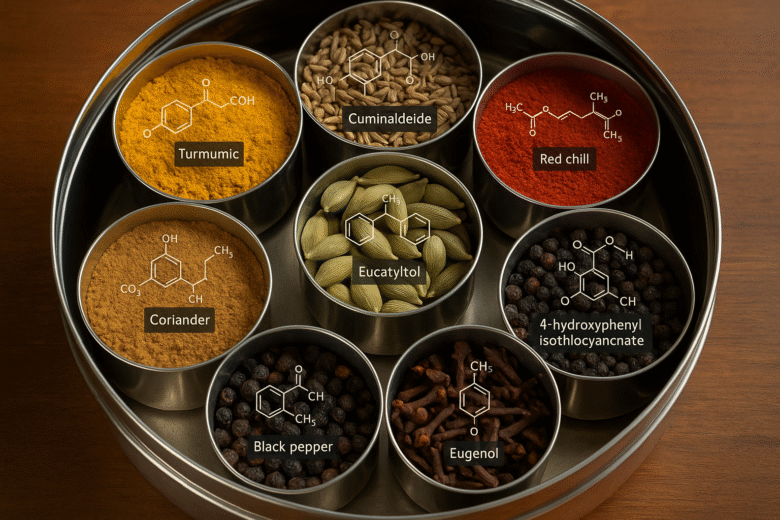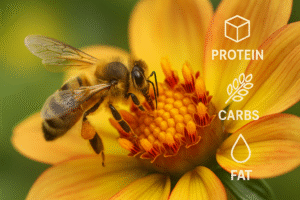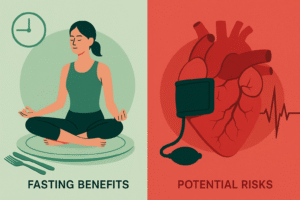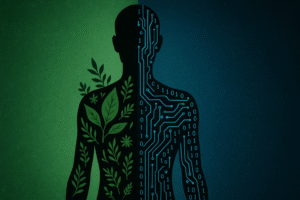Fun fact: Turmeric, the golden spice of India, contains a compound called curcumin that has been studied in over 6,000 scientific papers for its anti-inflammatory and antioxidant properties.
Step into any Indian kitchen and you’ll find more than ingredients. You’ll find a pharmacy, a chemistry set, a memory box, and a cultural codebook—all hidden in plain sight. A pinch of this, a spoonful of that. It might look like intuition or “grandma’s magic,” but behind every tadka (tempering) and masala blend is a science rooted in generations of trial, error, and astonishing precision.
It’s time we stopped calling Indian cooking just tradition. It’s time we recognized it as applied biochemistry in daily life. Because here’s the truth: Indian kitchens are laboratories, and spices are the original molecules of wellness.
Spices Are Not Just Flavour—They’re Function
When your mother added cumin to the dal, it wasn’t just for taste—it was to ease digestion. When your grandmother threw a bay leaf into the rice pot, she wasn’t decorating—she was regulating blood sugar. We’ve long dismissed these actions as culinary folklore, but modern science is catching up.
Let’s break down a few common spices and their surprising scientific roles:
Turmeric (Haldi): Contains curcumin, a powerful antioxidant and anti-inflammatory agent. Clinical trials have shown it helps with arthritis, metabolic syndrome, and even mild depression.
Black Pepper (Kali Mirch): Contains piperine, a compound that can boost the absorption of curcumin in the body by up to 2000%. It also improves digestion and has anti-cancer properties.
Cumin (Jeera): Contains thymol, which stimulates digestive enzymes and fights off harmful bacteria.
Fenugreek (Methi): Packed with galactomannan, a soluble fibre that slows digestion and helps regulate blood sugar.
Clove (Laung): Known for eugenol, a natural painkiller and antiseptic used in dentistry and gut health.
This isn’t just spice rack trivia. This is pharmacology dressed in aroma.
The Masala Code: A Case for Combinatorial Chemistry
Indian cooking isn’t just about isolated spices—it’s about their combinations. What makes Indian cuisine unique is how it mixes ingredients that seem wildly different but work together both gastronomically and biochemically.
A 2015 research study by IIT Jodhpur analysed over 2,500 recipes and found that Indian food tends to use ingredients with non-overlapping flavour compounds. Unlike Western cuisine, where complementary Flavors are paired, Indian food often brings together contrasts—turmeric with yogurt, garlic with cardamom, mustard seeds with coconut.
This isn’t random. This is combinatorial chemistry, evolved over centuries. Each combination balances heat with cooling, acidity with alkaline, and pungency with sweetness—not just for taste, but for digestion, absorption, and immunity.

Case Study: Khichdi—The Most Balanced Meal on Earth?
Let’s consider a humble bowl of khichdi. Lentils and rice, spiced with cumin, turmeric, ginger, and sometimes topped with ghee and asafoetida (hing). It’s soft on the stomach, easy to digest, and deeply nourishing.
Now let’s unpack it:
- The rice provides quick-release carbohydrates.
- The lentils supply protein and fibre.
- Turmeric reduces inflammation.
- Cumin aids digestion.
- Hing reduces gas and bloating.
- Ghee lubricates the gut and promotes nutrient absorption.
Modern dietitians call it a “complete meal.” Ayurveda called it Tridoshic—balancing all three doshas (Vata, Pitta, Kapha). Scientists are now finding it’s ideal for patients recovering from illness. Coincidence? Hardly.
Gut Feeling: Indian Spices and the Microbiome
Recent science is obsessed with the gut microbiome—the trillions of bacteria in our intestines that influence immunity, mood, metabolism, and even brain function. And guess what? Indian kitchens have been nurturing that gut flora for centuries.
Fermented foods like dosa batter, pickles, and buttermilk are probiotic powerhouses. Spices like ginger, coriander, fennel, and black pepper reduce inflammation and support healthy gut bacteria.
When your grandmother said “jeera pani” (cumin water) would settle your stomach—she wasn’t being quaint. She was conducting microbial science.
Spices as Preventive Medicine
Today’s medical model is often reactive: wait till the disease shows up, then treat it. Indian kitchens, however, operate on a preventive model.
Adding cinnamon to your chai? You’re stabilizing blood sugar. Using garlic in your sabzi? You’re boosting heart health. Boiling tulsi (holy basil) in your tea? You’re supporting respiratory immunity.
Companies like Organic India (an Indian wellness brand offering herbal teas and Ayurvedic supplements) and Kapiva (a health food startup producing cold-pressed juices, ghee, and Ayurvedic products) have built modern businesses around ancient spice wisdom. Their rising popularity shows that people are craving prevention—not just pills.

Why the World Is Finally Paying Attention
Global chefs are now experimenting with turmeric lattes and cardamom ice cream. But here’s what’s frustrating: while the West romanticizes spices, we in India often overlook their power.
A Western supplement branded as “curcumin complex” might cost ₹3000, but your mother’s haldi-doodh (turmeric milk) does the same job for ₹3. The science was never lacking—just the branding.
Even AI-based wellness platforms are turning east. Apps like Bitewell (a U.S.-based personalized food recommendation platform) and CarePredict (a predictive health tech company) are now researching how traditional food habits can inform predictive nutrition and long-term wellness planning.
Kitchen as Classroom, Masala as Curriculum
The Indian kitchen is a place of unspoken education. Children learn proportions not by measurements, but by smell, sight, and instinct. They learn how to care—what to feed a cousin with a cold, or how to make tea that helps with menstrual cramps. It’s generational science passed down in steel dabbas (tiffin boxes), not textbooks.
But what if we took it seriously? What if food science syllabi included regional masalas? What if medical schools studied spice compounds alongside pharmaceutical molecules? What if policymakers recognized home-cooked meals as preventive health tools?
Conclusion: Reclaim the Lab
Indian kitchens aren’t just places of nourishment—they’re centres of innovation, intuition, and quiet resilience. In a world drowning in ultra-processed food and quick fixes, the Indian spice box offers something radical: care, curiosity, and control.
We need to reclaim our kitchens—not as burdens, but as blueprints. Not as places where “women cook,” but where science breathes and culture thrives.
Because when you really think about it, the most advanced healthcare system in the world might already be simmering on your stove.
Author’s Note
This blog is a tribute to the unsung scientists in every Indian family—the mothers, grandmothers, fathers, and uncles who used their senses like sensors and their intuition like data. Your kitchen isn’t ordinary. It’s a pharmacy, a classroom, and a lab. Treat it like one.
G.C., Ecosociosphere contributor.




